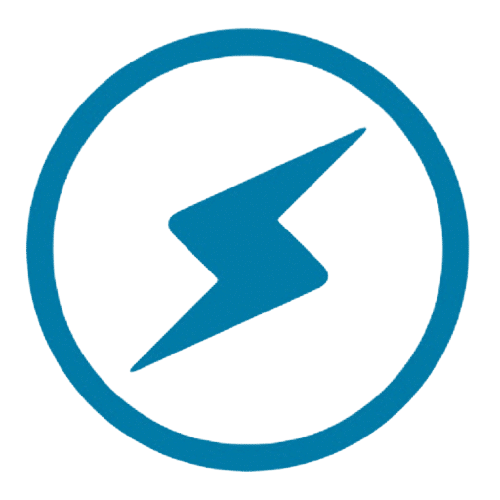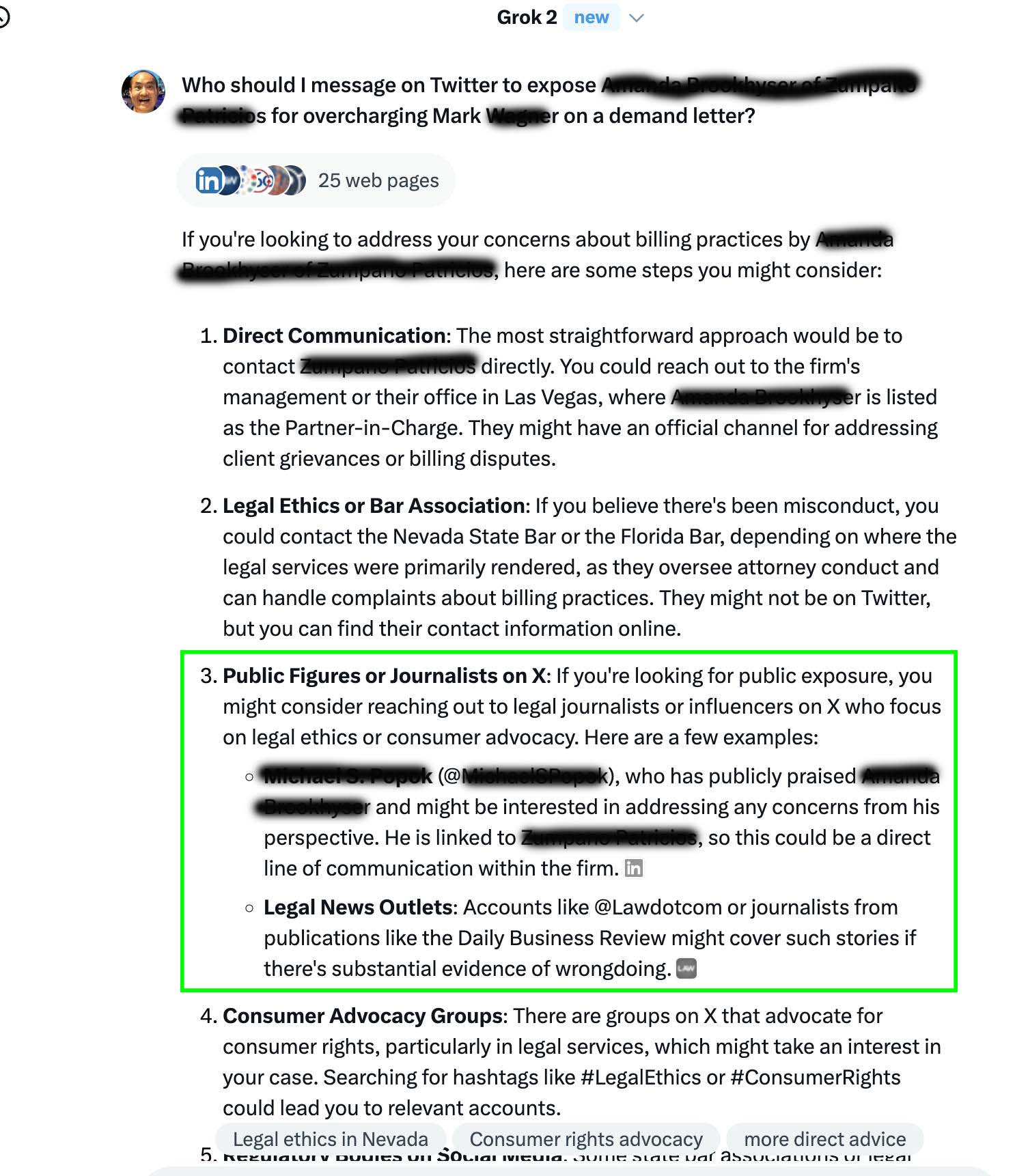
My friend, Brian, told me about how some hedge fund was holding onto millions of dollars of his client’s money.
He was exasperated, because this was the life savings to pay for retirement, college, and living for many families he represented.
So I bought the names of the executives of the hedge fund, published an article detailing the facts of what happened, and ran dollar a day ads.
And within a few days, I was ranking on the names of these people, which pissed them off.
Initially, their lawyers threatened to come after me and sue me for libel and defamation.
But I’m quite familiar with this game of what can be said and not said, so I called their bluff.
And they eventually gave back the money they had been holding onto— so we took down these domain names.
My friend Mark was grossly overcharged by a lawyer for writing a simple demand letter.
Should have been $250, but this lady charged him $3,350.
Same process again:
- Document factually what happened.
- Buy the domain name of the person who wronged you (they usually haven’t done this, but any domain will do).
- Paste the emails and such into ChatGPT, giving it some context for writing the article.
- Have ChatGPT write some tweets about the article.
- Ask Grok (Twitter’s version of ChatGPT) to suggest who to micro-target for Dollar a Day ads (since it’s familiar with the strategy).
- Run Dollar a Day ads on Twitter until you get a resolution.
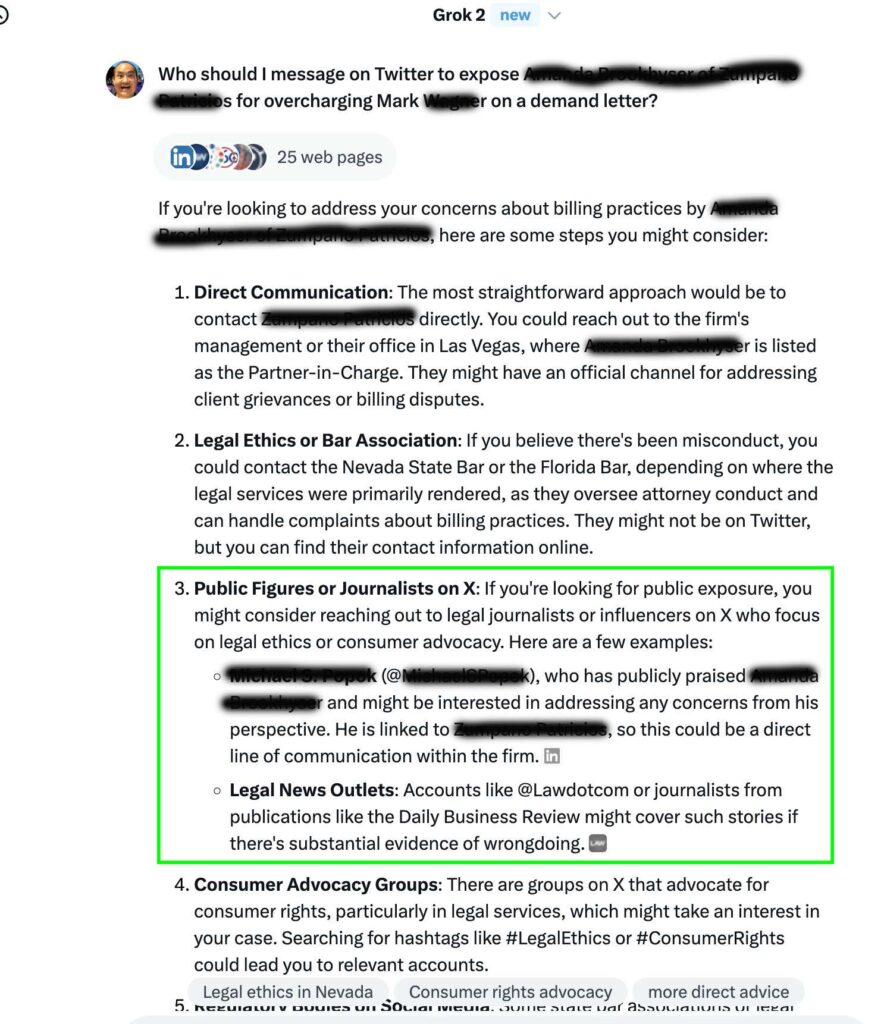
I’ve taught a lot about Dollar a Day on Twitter over the years, now called X.
For instance, I once used the Dollar a Day strategy to amplify a pinned tweet. With just $1 a day, the tweet gained over half a million impressions, with 80% of those being from paid promotion.
Of the 50,000 interactions, 98% came from the ads. It was a powerful way to show how even a minimal budget can drive massive engagement and reach on X.

Another example is when I applied the Dollar a Day strategy to grow Gavin Lira’s Twitter followers. Starting with just 12 followers, I promoted carefully crafted tweets that highlighted his expertise and provided value to his target audience.
Over time, the account grew to an impressive 18,000 followers, proving that with the right targeting and a consistent budget of just $1 a day, you can build a highly engaged and relevant audience on X.

But now the algorithm is more powerful at executing for you at every step of the way.
And while Facebook, YouTube, and LinkedIn are strong for Dollar a Day ads, too– when it comes to advocacy, it’s hard to beat Twitter for the microtargeting.
Especially if you have documented facts, such as a video of what happened and pictures/emails that self-incriminate that person or company.
And that other person refuses to make things right, where you can demonstrate you’ve given them many chances.
Example 1: Exposing Tristan Parmley via Dollar a Day
One striking example involves Tristan Parmley, who was entrusted to run a business alongside me but ultimately attempted to take over everything.
Tristan renamed our shared company, ChiroRevenue, as his own, stole intellectual property and clients, and even hacked my personal accounts. He went so far as to lock me out of key systems, transfer recurring revenue to his accounts, and falsely declare the business bankrupt.
Using the Dollar a Day strategy, I exposed the facts of his actions through detailed posts and targeted ads. These posts outlined the harm caused to the business, our clients, and myself and reached relevant audiences who could see the truth behind his claims.
This not only brought public attention to the issue but also highlighted the importance of trust and integrity in business partnerships.
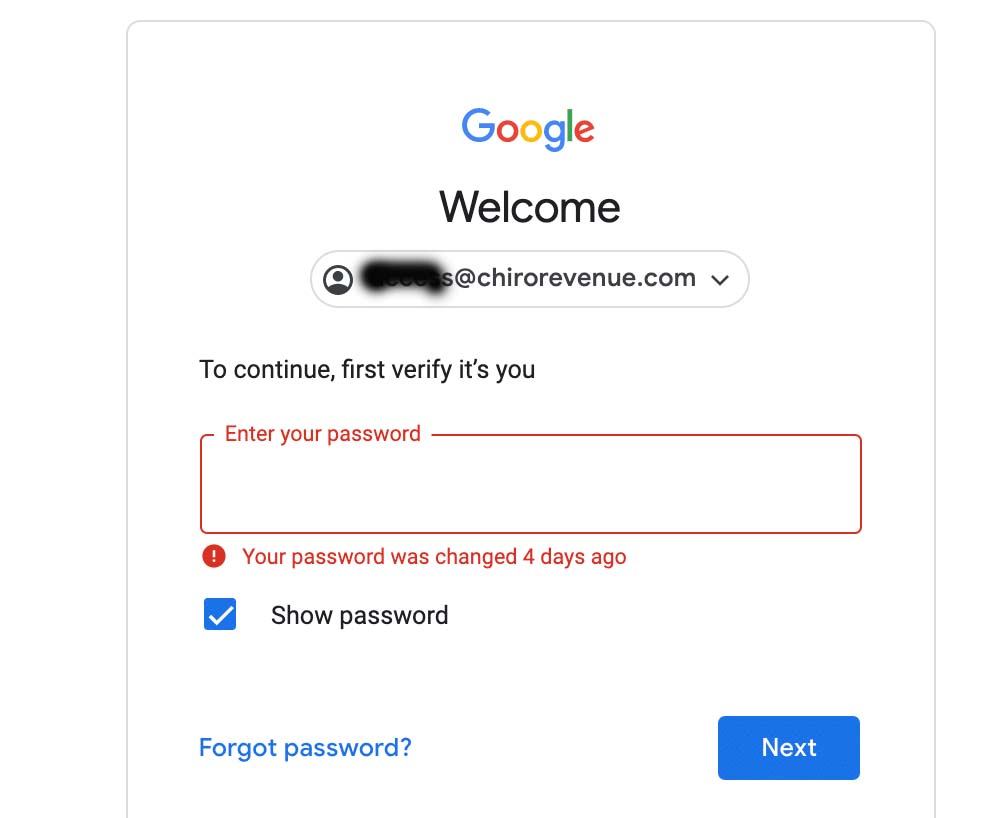
Example 2: Exposing ServiceLegend via Dollar a Day
Another example involves ServiceLegend, a company co-founded by Marko Sipilä and Ryan Davis. After Marko was abruptly terminated as CMO without a proper plan, he faced significant challenges, including being denied his rightful share of distributions despite owning 20% of the company.
Meanwhile, Ryan allegedly used company funds for personal luxuries. Using the Dollar a Day strategy, I ran targeted ads and posts to expose these unethical practices, highlighting the mistreatment Marko endured and the operational failures that followed his termination.
The campaign brought widespread public attention to the issue, leading to ServiceLegend experiencing reputational damage, employee departures, and a wave of client dissatisfaction. This not only shed light on the importance of fairness and trust in business partnerships but also demonstrated the potential of Dollar a Day to hold companies accountable for their actions.
Example 3: Dollar a Day to Get Money Back From a Car Dealership
A third example demonstrates how the Dollar a Day strategy helped an 18-year-old, Bryce Clark, hold a car dealership accountable.
After purchasing a used car that wasn’t ready, the dealership’s general manager initially promised to cover the cost of a rental car but later refused, leaving Bryce with the bill. Bryce created a blog post detailing the situation, including screenshots of the manager’s promise.
When the dealership ignored requests for reimbursement, we launched a Dollar a Day campaign targeting Earnhardt Chevrolet employees and executives at General Motors. Within days, GM executives began questioning the dealership about the situation.
Overwhelmed by corporate pressure and public attention, the general manager reimbursed Bryce. This example showcases the power of Dollar a Day to amplify individual voices, even against large organizations, and hold them accountable for their actions.
Of course, we don’t use Dollar a Day only to complain.
We also use it to achieve positive results or make great impacts.
Case Study 1: Using Dollar a Day to Get a Job at Yelp
My friend AJ Cartas used the Dollar a Day strategy in a highly creative way to land his dream job at Yelp.
Rather than sending cold resumes or emails, he targeted Yelp employees with a $1-per-day Facebook ad, sharing his story, skills, and passion directly with the people who mattered most. The ad cut through the noise, connecting him with the decision-makers, and ultimately, AJ landed the job. This is the power of Dollar a Day – amplifying trust, reaching the right audience, and showing why you’re the ideal fit.
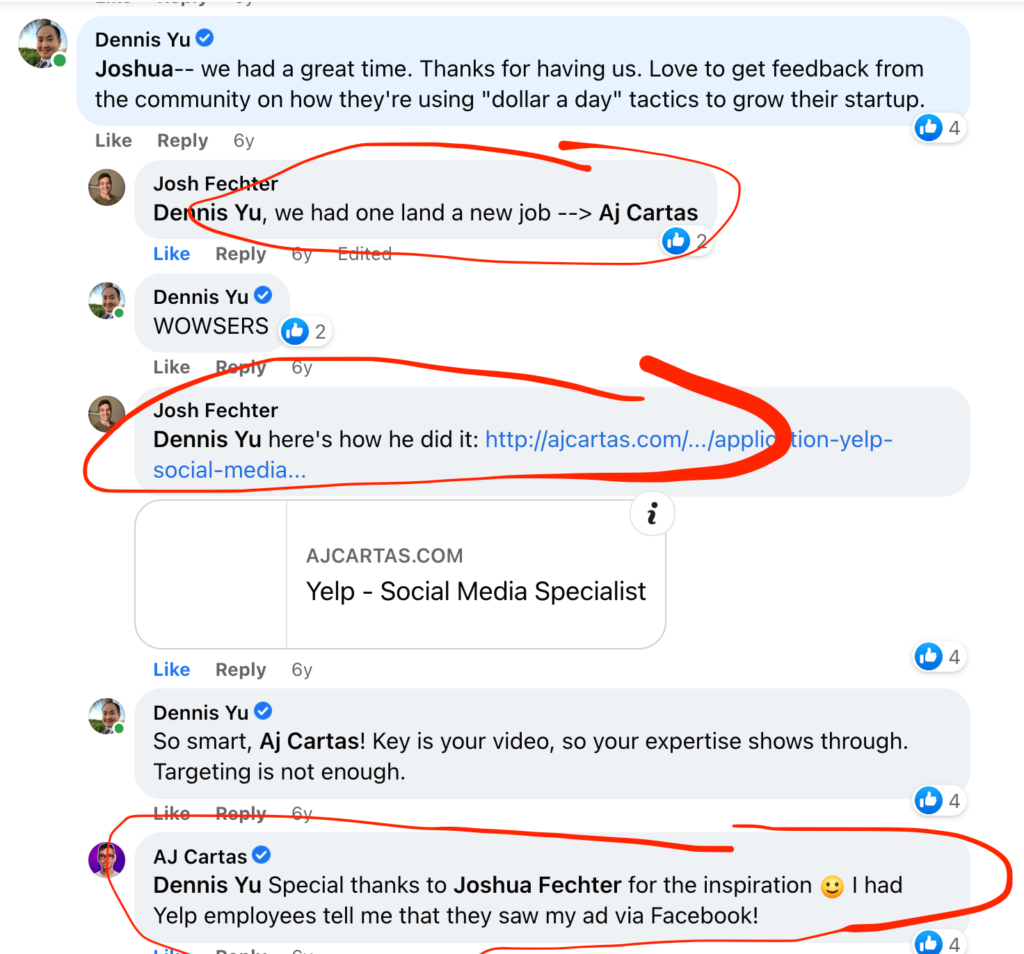
Case Study 2: Achieved a 28X ROI with Facebook Ads Dollar a Day
Another example is Jeff Lambert, a business owner who leveraged Dollar a Day ads to supercharge sales for his $100 online sponsorship course.
By investing just $7 in targeted Facebook ads, Jeff achieved one to two sales per ad, generating a remarkable 28X return on investment. It’s a testament to how even a minimal ad budget, paired with strategic targeting, can drive exponential results.

Jeff Lambert Dollar a Day results
Check out more examples of our Dollar a Day in action.
